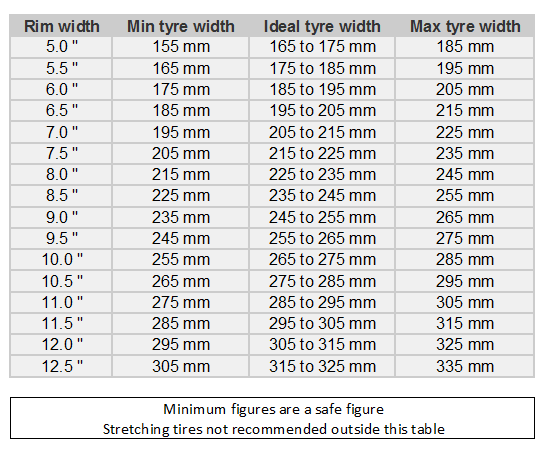Disclaimer:
1-- This thread may not be suitable to "Wow- HAWT Rims Dude" mentality. A lot of people sale/ purchase rims on these forums. This is not to offend anyone. Just for everyday user who might be interested in making a more informed choice.
2-- The snapshots below are compiled from Internet. The thread itself is inspired through experience.
I have been waiting to write this thread for fellow Pakwheelers since long. We come across a lot of of Q&As regarding rims/tires choice from users on forums. Some fancy design, some fancy a more dominant look, while some fancy light weight (Light Weight: a term quite misused these days).
This thread focuses on usual overlooks one can make while replacing stock rims with aftermarket alternatives.
THE BASICS!!! (What we all know)
R12, R13, R14, R15, R16. I believe these are the stock sizes we see in most of the JDM and PKDM sedans roaming around these days.
The next is PCD and hole pattern. 100 x 4, 114.3 x 5 , etc.
What we do is make majority choices based on just these two specifications.
The next thing which is only sometimes mentioned or discussed is the rim width. Now if you are going to use those OEM supplied tires (EuroStar or whatever) , you have to take this into account because each rim width can support only a certain range of tyre width as per below table.

[/B][/B][/B]This might help people who have already opted for wider tires in past. And now are just replacing rims since they found a good deal online or in a store.
For those of you going for complete Rim / Tire Replacement, you might want to go through the following information first.
Rim Offset. Yes, this parameter (if ignored) is what is responsible for a hard steering, early ball joint failures and vehicle stability (under braking) issues in majority of the cases.
Let me explain why,
Most people generally opt for wider tires when replacing OEMs. This needs to be accounted by wider rims. If one does not go for a wider rim, the following may occur:
Unmatched tire and rim may cause high speed turning instability and in some cases, less than ideal suspension response. A wider tire on a narrow rim changes the profile shape (when inflated at same Pressure). Since the road bumps are transferred through tire side wall (inflated by air) > Rims > Hubs > Damper > Chassis,
Thus the shape (cushion ability) of the tire side wall reflects in suspension response.
Continuing the argument, now a wider rim + tire combo has restrictions by wheel arch for front wheels. As the steering turns, the wheel might hit the inside of the arch. Or a wider tire might not be able to bolt on. It might hit the damper.
To compensate this problem, most wider aftermarket rims decrease the positive wheel offset. This brings the tire outside the wheel arch.
Example:
Now as intimidating as this may look at times, this change in wheel offset has changed another parameter in the car. The Scrub radius.
You may use google to drill down into the significance of scrub radius. But to summarize the effects, a change in scrub radius requires more effort by driver to turn the steering on a standstill vehicle (assuming we moved from an Ideal Zero Radius to some positive value. Generally vehicles these days are at slightly negative scrub). It also increases stress on control arm ball joints (or in some cases, wheel spindle). And it may cause vehicle to lose straight line path in hard braking.
So the question comes, "I as a buyer don't have enough time to go through all this on a retail shop. Its time consuming and seems insane"
Answer: No. It isn't. Just take along a measuring tape and it takes only 30 seconds to measure and calculate rim width and offset.

RIM WEIGHT!!!
Lighter is better (But then again, its relative). It matters if you compare with your To-Be-Replaced Steelies.
If upgrading from R13 to R16 and ending up heavier than the steel ones, whats the point??? But then again, the lower profile is going to crack your spine first. 
Anyways if you do find a rim that meets your OEM specs as described above, simply take your stock steel rim in one hand and your aftermarket choice in another. Make a rough estimate which one is lighter. The odds are, if all other specs are matched, the alloy wheel is going to take lead. Don't forget to take into account the max load by each rim. Its usually mentioned by well known manufacturers. JWL or JAWA approved are to be considered here.
Lighter is better. Reason being, the lighter the rim, the lesser the unsprung mass. The lesser the work done by suspension to cater to road bumps. The smoother the ride.
If it seems all too difficult and complicated to make a choice, simply find OEM alloy wheels for your make/model and you are good to go. These are usually selected considering all the specs. A bit pricy but worth the investment.
Example.
For Corolla, look for ones in Altis
For civics, source out the ones in Oriel
For city, strike a deal with those of Aspire or even Steermatic (Very Unlikely)
For Cultus, The obsolete VXL ones.
I hope this article helps you out in your quest to make good choice for your vehicle. Happy cruising !!!!
________________________________________________________________________________________________________________________________________________________________________________________________________